| Stories about the poet |

Aodhagán Ó Rathaille,
His
father died when he was young, leaving a good inheritance
at Scrahanaveal, Kilcummin parish, E of Killarney, Co.Kerry.
He seems to have dissipated
the inheritance.
He is
described in
[O'Reilly, 1820]
as "an opulent man".
He lived for a time in poverty in W Co.Kerry at
"Duibhneacha".
The
index
of
[Dineen and O'Donoghue, 1911]
says that "Duibhneacha" simply refers to
Corca Dhuibhne
(the Dingle Peninsula).
On the Dingle Peninsula he lived opposite
Rossbeigh (Rossbehy), Glenbeigh, Co.Kerry
(see map).
See poem about living in "Duibhneacha".
Note
this was before
Blennerhassett
came to Rossbeigh.
He
finally
tenanted, with his mother, a small farm in Stagmount, Kilcummin par, E of Killarney
(see map).
He "came to manhood as the Jacobite cause was defeated at the Boyne, Aughrim and Limerick, and wandered through Munster visiting the homes of the last of the Gaelic chiefs, lamenting the decay of the old order".
"He is beyond all others the poet of the ancient Irish nobility"
[Dineen and O'Donoghue, 1911].
"In his poetry he characterised the new planters as upstarts and boors and he mercilessly satirised their greed and ignorance".
"Ó Rathaille reached manhood as a civilisation came to an end"
[Wallace, 1983].
Many of his poems are "Aisling" poems,
where Ireland is portrayed as a sorrowful, beautiful lady,
awaiting the return of her true love from exile
(on the Continent).
His are the classics of the form.
He was called
"athair na haislinge" (father of the aisling).
[Dineen and O'Donoghue, 1911]
write:
"O'Rahilly .. lived at a time of supreme crisis in Irish history.
...
never were a nation's woes depicted with such vivid anguish and such passionate bursts of grief."
"His mind is never off this theme."
He was
descendant of the brehons to MacCarthy Mor.
He now tried to maintain the patronage of their successors,
the Catholic
Viscounts Kenmare.
The estates of
Valentine Browne, 1st Viscount Kenmare
had been forfeited in 1691
due to the family's support for the
Jacobite
cause.
Nicholas Browne, 2nd Viscount Kenmare
succeeded to the title in 1694,
but his estates were still forfeit.
Aodhagán wrote in praise of both the MacCarthys and the Brownes.
He
wrote an elegy in 1706 to John Browne, brother of 1st Viscount Kenmare.
He
wrote a poem c.1708
"To the Chieftain Eoghan, son of Cormac Riabhach MacCarthy".
He
wrote an elegy to John Blennerhassett
of Ballyseedy in 1709:
"John, son of John, son of John of Ballyseedy".
His
patron
Valentine Browne, 3rd Viscount Kenmare
succ 1720 and recovered the family estates.
He
wrote a poem
celebrating the marriage of the 3rd Viscount Kenmare
to
Honora Butler
in 1720.
See
his signature on a manuscript in 1722.
He
wrote "songs" to amuse the
3rd Viscount Kenmare's children. He was paid for these in 1727.
But at some point he wrote
angry verses about the 3rd Viscount Kenmare.
See his works.
There are a few stories about him:
A learned and well-read man, he delighted on occasion in acting the simpleton.
See stories
(below) from
Pages xxviii-xxix
in
[Dineen and O'Donoghue, 1911].
[1910 letter from The O'Rahilly]
says he heard
"the story of a protest of his against collections in church,
which was said to have resulted in their abolition".
[1910 letter from The O'Rahilly]
says:
"The only Ms. that I could trace was one which was given some years ago
to a Mr. Francis Wicksteed, an English friend of
The Mac Gillicuddy,
by one of the Rahillys of Bellaghbeama"
[Bellaghbeama Gap, Macgillycuddy's Reeks, Co.Kerry]
"which, I understand, contained a satirical warning by Egan to any who might presume to molest his dog".
He was reduced to poverty in later years.
See him being paid in 1727
for writing songs for Viscount Kenmare's children.
His wife died.
He lived with his younger, unmarried daughter at Stagmount.
After his daughter died, he moved to his elder daughter's house in Tomies.
He
died
est c.1730, age c.60 yrs, at his elder daughter's house in Tomies.
There are various estimates for his year of death,
but no real knowledge.
See his deathbed poem
(referred to in the poem
The Curse of Cromwell
by Yeats).
He was
bur
Muckross Abbey,
Killarney, Co.Kerry.
See the poet's grave.
No wife is named, but he
had issue:
"Everyone whom I interviewed stated that Egan had no sons"
[1910 letter from The O'Rahilly].
However
Aodhagán is claimed to have had illegitimate issue:



The entry for the poet on
Pages ccxx-ccxxi
under
"A.D. 1726" in
[O'Reilly, 1820].
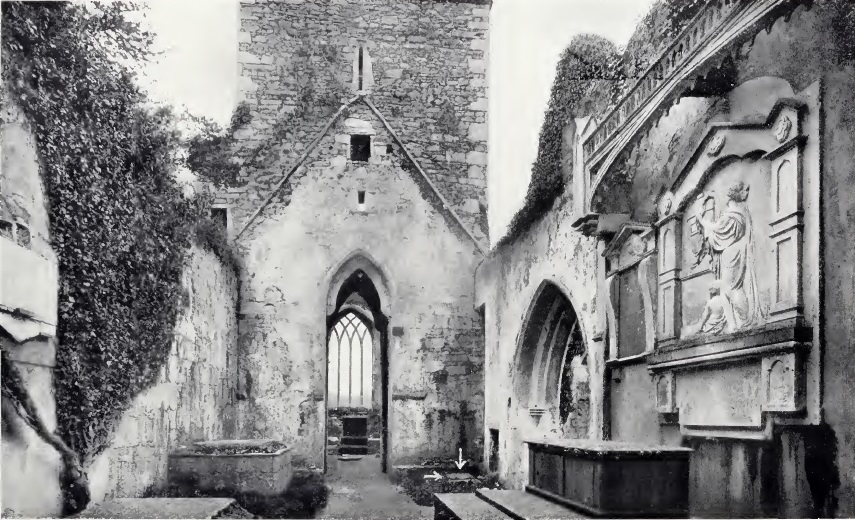
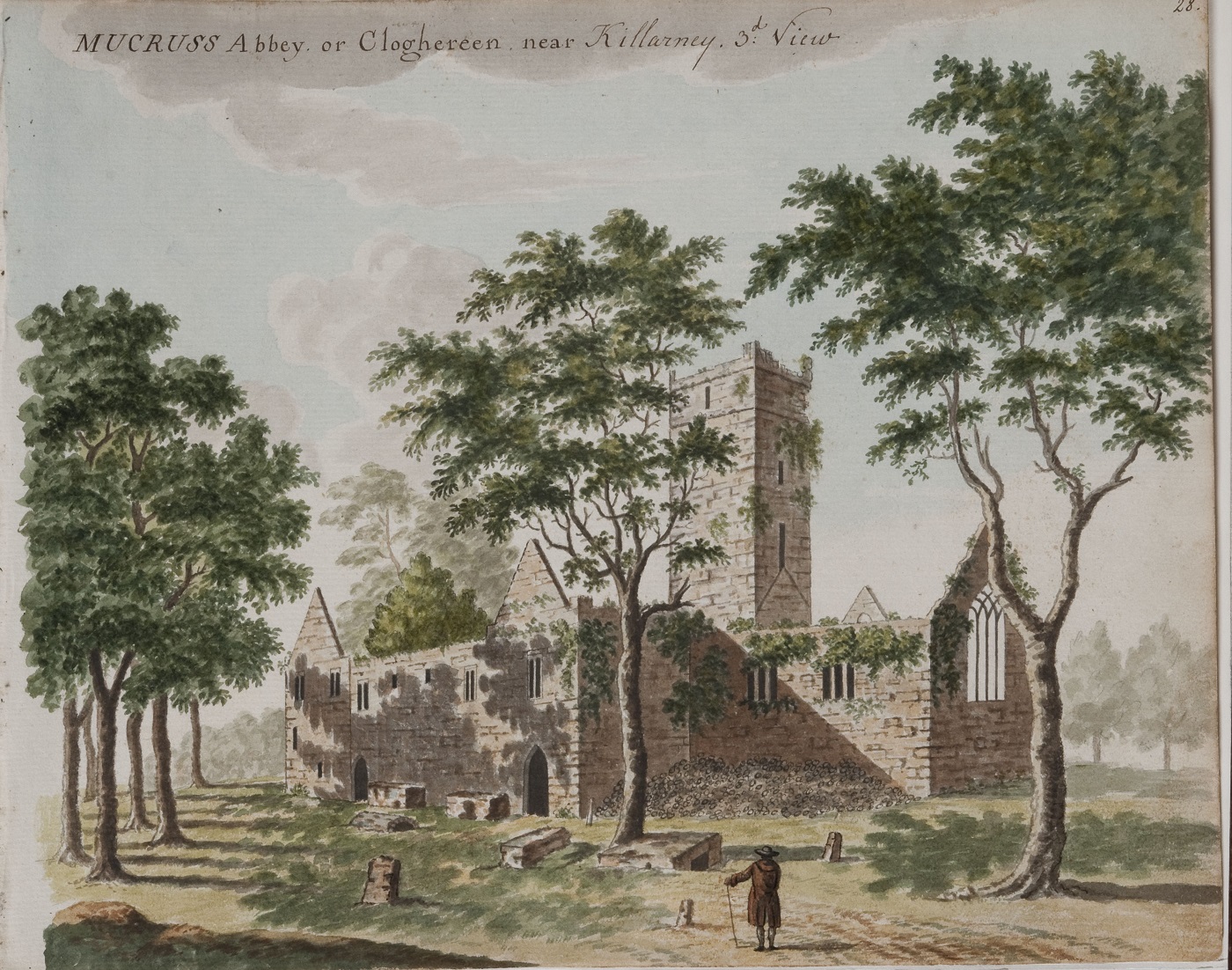
Muckross Abbey.
Drawn by Gabriel Beranger. Late 18th century.
The poet
was already buried at Muckross Abbey at this time.
(Go through the first door here. Turn right. Head up towards the tower.)
From Royal Irish Academy.
Image from here.
Creative Commons Non-Commercial use.
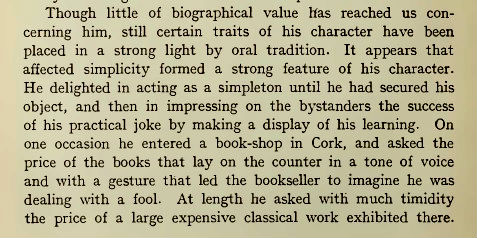
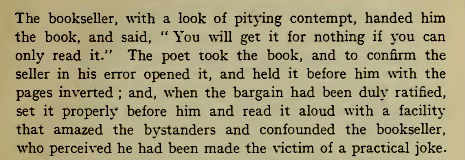
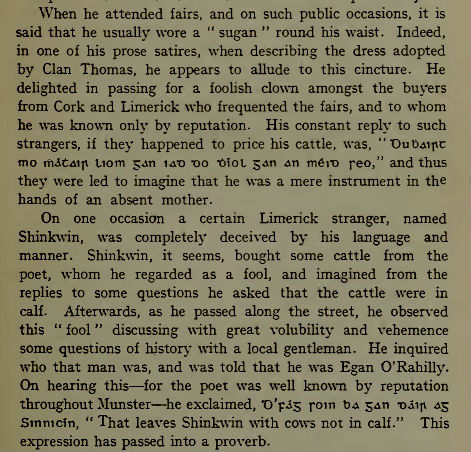
A story about the poet bringing his cattle to the fair.
From
Page xxix
in
[Dineen and O'Donoghue, 1911].



Castle Togher, Togher, Fanlobbus par
(NW of Dunmanway), Co.Cork.
From
1829 to 1842 map.
Poem X,
"The poet at Castle Togher",
describes the poet visiting this castle (would be before 1730).
Castle Togher was
a former MacCarthy castle, now held by Warner.
He sees such hospitality that he thinks the
MacCarthys are in their seat again.
See modern
satellite view.

Castle Togher.
Photo 2007.
From Mike Searle on Geograph.
See more pictures.
See street view.


The deathbed poem (est c.1730) of Aodhagán Ó Rathaille.
The reference to the "princes"
is to the MacCarthys,
who were also buried at Muckross Abbey.
"Stadfadsa feasta - is gar dom éag gan mhoill
ó treascradh dragain Leamhan, Léin is Laoi;
rachad 'na bhfasc le searc na laoch don chill,
na flatha fá raibh mo shean roimh éag do Chríost."
"I will stop now - my death is hurrying near
now that the warriors of the Laune, Lein and Lee are destroyed;
I will follow the beloved among heroes to the grave,
those princes under whom were my ancestors before the death of Christ."
- The deathbed poem (est c.1730) of Aodhagán Ó Rathaille.
Please donate to support this site.
I have spent a great deal of time and money on this research.
Research involves travel and many expenses.
Some research "things to do"
are not done for years, because I do not have the money to do them.
Please Donate Here
to support the ongoing research and
to keep this website free.